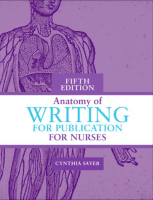U.S. deaths from heart disease and stroke fall by 30%
U.S. death rates for coronary heart disease and stroke have fallen 30% this decade, according to the American Heart Association’s Heart Disease and Stroke Statistics—2009 Update. Better cholesterol and hypertension control, lower smoking rates, and improved medical treatments contributed to the improvement. Preliminary figures for 2006 (the latest year for which statistics are available) show that the rate of heart disease deaths (including myocardial infarction and heart failure) fell about 31% from 1999 levels; these figures reflect further reductions from the 2005 numbers announced in 2008. However, heart disease remains the leading cause of death in the United States, and some experts worry that the obesity epidemic could cancel out the cardiovascular death rate decline.
http://americanheart.mediaroom.com/index.php?s=43&item=626
http://circ.ahajournals.org/cgi/reprint/CIRCULATIONAHA.108.191261v1?maxtoshow=&HITS=10&hits=10&RESULTFORMAT=&fulltext=American+Heart+Association%92s+Heart+Disease+and+Stroke+Statistics+%96+2009+Update&searchid=1&FIRSTINDEX=0&resourcetype=HWCIT
CDC updates pediatric and adult immunization schedules for 2009
The Centers for Disease Control and Prevention (CDC) has updated its 2009 immunization guidelines. For the pediatric schedule, important changes from the 2008 schedule include the following:
• All children ages 6 months to 18 years should get yearly influenza vaccine.
• All eligible close contacts of children ages 0 through 59 months should receive influenza vaccine, as should contacts of children ages 5 through 18 with underlying medical conditions that predispose them to flu complications.
• The Food and Drug Administration has licensed a second oral rotavirus vaccine and has harmonized its schedule with the other one. The first dose of either vaccine should be given at age 6 weeks through 14 weeks + 6 days, with the final dose given by age 8 months 0 days. For infants ages 15 weeks 0 days or older, rotavirus immunization shouldn’t be started. For adults, no new vaccines have been added, but the schedule has been updated to clarify that adults who’ve received just one dose of varicella vaccine should get another.
http://pediatrics.aappublications.org/cgi/content/full/123/1/189
http://www.cdc.gov/vaccines/recs/provisional/downloads/roto-7-1-08-508.pdf
http://www.annals.org/cgi/content/full/150/1/40
Surprising facts about uninsured ED patients
New research refutes the conventional wisdom that uninsured and underinsured patients drain emergency department (ED) medical resources. Researchers conducted a MEDLINE search for citations published from 1950 to 2008 that focused on uninsured adults (ages 18 to less than 65) treated in American EDs. After reviewing 127 papers to identify assumptions, they searched peer-reviewed literature, administrative data, and national data sets for data to support each assumption. They concluded that the literature does not support three of the six most common assumptions—uninsured patients present with nonurgent problems, cause ED crowding, and present more often than insured patients. They found that the three other common assumptions—uninsured patients lack access to primary care, are presenting to EDs with increasing frequency, and are more expensive to treat in the ED than elsewhere—are equally true for uninsured and insured patients.
http://www.kff.org/uninsured/fact-sheet/key-facts-about-the-uninsured-population/
MRI scans help diagnose Alzheimer’s disease
In a new study, magnetic resonance imaging (MRI) scans detected atrophy in midbrain regions affected by Alzheimer’s disease (AD), accurately diagnosing the condition before symptoms impaired daily function. Researchers compared MRI scans of 260 people in several groups: one with probable AD, two with varying degrees of mild cognitive impairment, and a control group of normal elderly subjects without discernible memory loss. Scores generated by the scans accurately distinguished each group from the other and correlated with the types of memory problems that AD most commonly causes.
http://www.neurology.org/cgi/content/abstract/71/24/1986
Aggressive glucose control in diabetics doesn’t reduce cardiovascular events
Aggressive control of glucose levels in patients with poorly controlled type 2 diabetes doesn’t significantly decrease cardiovascular risk, according to a study that randomized 1,791 military veterans with poorly controlled diabetes to either intensive or standard glucose control. About 40% of the patients had already had a cardiovascular event. Although by 6 months the intensive-treatment group had a median glycosylated hemoglobin level that was 1.5 percentage points lower than the standard group, both groups showed similar rates of major cardiovascular events by a median follow-up of 5.6 years.
http://content.nejm.org/cgi/content/full/NEJMoa0808431
http://clinicaltrials.gov/show/NCT00032487
IOM recommends new limits on resident work hours
The Institute of Medicine (IOM) is recommending new limits on work hours for medical residents to prevent fatigue and, in turn, medical errors. The recommendations are the first since the Accreditation Council for Graduate Medical Education (ACGME) imposed national limits on residents’ duty hours in 2003. The IOM advocates taking new steps to relieve residents’ fatigue and sleep loss, increase their supervision by more senior physicians, improve patient “handoff” processes, and stiffen enforcement by initiating federal oversight of ACGME regulations. Specific recommendations include the following:
• When duty periods exceed 16 hours, residents should be guaranteed a 5-hour uninterrupted overnight sleep period.
• Residents shouldn’t be allowed to admit new patients after 16 hours on duty.
• They should get 5 days off each month, including 2 days in a row.
http://www.iom.edu/Object.File/Master/60/469/residency%20hours%20revised%20for%20web.pdf
http://content.nejm.org/cgi/content/full/NEJMp0808736


















